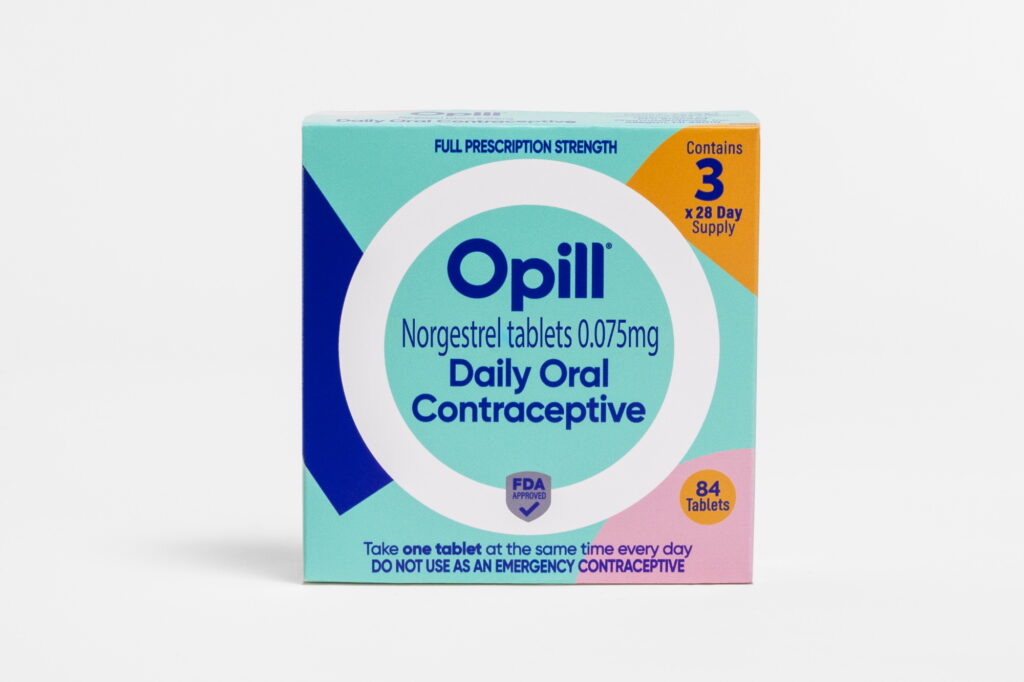Post-Roe America: How OTC Birth Control Impacts Women's Health

Table of Contents
Increased Access and its Benefits
The potential expansion of OTC birth control offers numerous advantages for women's health and reproductive freedom. Increased access translates to improved convenience and affordability, ultimately empowering women to take control of their reproductive health.
Improved Convenience and Affordability
- Eliminates doctor's visit costs and associated time constraints: Securing a prescription for birth control often involves multiple doctor visits, co-pays, and time off work, creating financial and logistical barriers for many. OTC birth control eliminates these hurdles, making it significantly more accessible.
- Makes birth control more accessible to low-income women and those in underserved areas: The cost of prescription birth control can be prohibitive for low-income individuals, disproportionately impacting women in underserved communities. OTC options offer a more affordable alternative, potentially leveling the playing field.
- Reduces barriers to consistent contraceptive use, potentially lowering unintended pregnancies: Consistent contraceptive use is crucial for preventing unintended pregnancies. Easier access to OTC birth control can improve adherence and reduce the risk of unplanned pregnancies.
The financial burden of prescription birth control is substantial for many women. Co-pays, insurance limitations, and the cost of doctor visits can make consistent contraceptive use a significant challenge. OTC access can dramatically alleviate this financial strain, allowing women to prioritize their reproductive health without compromising their financial stability.
Empowering Women to Take Control of Their Reproductive Health
- Fosters greater autonomy in reproductive decision-making: Having readily available OTC options allows women to make informed choices about their bodies and future without relying on external gatekeepers.
- Reduces reliance on healthcare systems that may be limited or biased: Access to healthcare varies widely across the US. OTC birth control provides an independent option, lessening reliance on potentially overburdened or biased healthcare providers.
- Allows for more proactive and informed family planning: With greater control over contraception, women can better plan their families and make choices aligned with their personal goals and circumstances.
The psychological benefits of self-managing contraception are significant. Empowerment and control over one's reproductive health can improve self-esteem, reduce anxiety, and foster a greater sense of agency.
Potential Challenges and Concerns
While increased access to OTC birth control presents significant advantages, potential challenges and concerns must be addressed to ensure its safe and effective implementation.
Misinformation and Improper Use
- Risk of incorrect dosage or use leading to reduced effectiveness: Without professional guidance, there's a risk of misuse, leading to reduced efficacy and increased risk of unintended pregnancy.
- The need for clear and accessible educational resources on proper use and potential side effects: Comprehensive educational campaigns and easily accessible information are critical to ensuring safe and effective use.
- The potential for increased reliance on less effective methods due to lack of professional guidance: Lack of proper guidance could lead some women to choose less effective methods or abandon contraception altogether.
Public health campaigns, targeted online resources, and clear labeling on OTC products are essential in mitigating the risks of misinformation and improper use. These resources should be accessible, culturally sensitive, and tailored to diverse populations.
Health Disparities and Access Gaps
- Ensuring equitable access for all women, regardless of race, socioeconomic status, or geographic location: Addressing existing health disparities is crucial. Increased access to OTC birth control should not exacerbate existing inequalities.
- Addressing potential barriers to information and access in underserved communities: Outreach programs are needed to reach women in underserved areas, ensuring they have access to information and resources.
- The need for culturally sensitive outreach and education programs: Educational materials should be culturally appropriate and address the specific needs and concerns of diverse populations.
Subsidized programs, mobile clinics, and community-based initiatives are potential solutions to address access gaps and health disparities. These initiatives should prioritize reaching women in underserved communities.
Regulatory and Policy Implications
- The role of the FDA in ensuring the safety and effectiveness of OTC birth control: The FDA plays a crucial role in regulating OTC medications, ensuring their safety and effectiveness. Robust regulation is vital.
- Potential impact on insurance coverage and reimbursement policies: Changes in insurance coverage could significantly affect access and affordability.
- Debate surrounding the regulation of OTC birth control and its potential effects on women’s healthcare: Policy discussions need to balance increased access with safety concerns and potential unintended consequences.
Analyzing existing and proposed legislation related to OTC birth control and its implications for women's healthcare is critical for informed policymaking.
The Future of OTC Birth Control in Post-Roe America
The future of OTC birth control in Post-Roe America hinges on research, advocacy, and a commitment to equitable access.
Research and Development
Ongoing advancements in contraceptive technology, such as long-acting reversible contraceptives (LARCs) and new hormonal formulations, could further expand OTC availability and improve effectiveness.
Advocacy and Education
Advocacy groups play a crucial role in promoting safe and accessible birth control, ensuring policies support equitable access for all women. Comprehensive sexual education is also essential.
Long-Term Impacts on Public Health
The long-term effects of increased OTC birth control access on unintended pregnancies, abortions, and maternal health require careful monitoring and analysis. This data will inform future policy decisions.
Conclusion
The availability of over-the-counter birth control in the Post-Roe era presents both significant opportunities and challenges for women's health. Increased access can empower women, improve convenience, and lower costs, but careful consideration must be given to potential issues such as misinformation and health disparities. Understanding the implications of OTC birth control is crucial for navigating reproductive healthcare in Post-Roe America. Advocate for policies that ensure safe, affordable, and equitable access to over-the-counter birth control options for all women. Stay informed about advancements in birth control and advocate for comprehensive sexual education. Learn more about over-the-counter birth control options and how to use them safely and effectively.

Featured Posts
-
 Ryujinx Emulator Shut Down Following Nintendo Contact
Apr 22, 2025
Ryujinx Emulator Shut Down Following Nintendo Contact
Apr 22, 2025 -
 Swedens Tanks Finlands Troops Enhanced Nordic Security
Apr 22, 2025
Swedens Tanks Finlands Troops Enhanced Nordic Security
Apr 22, 2025 -
 Google Faces Renewed Legal Challenge Doj Fights Search Monopoly Allegations
Apr 22, 2025
Google Faces Renewed Legal Challenge Doj Fights Search Monopoly Allegations
Apr 22, 2025 -
 The Karen Read Case A Timeline Of Key Events And Legal Developments
Apr 22, 2025
The Karen Read Case A Timeline Of Key Events And Legal Developments
Apr 22, 2025 -
 Section 230 And Banned Chemicals E Bay Listings Face Legal Scrutiny
Apr 22, 2025
Section 230 And Banned Chemicals E Bay Listings Face Legal Scrutiny
Apr 22, 2025
